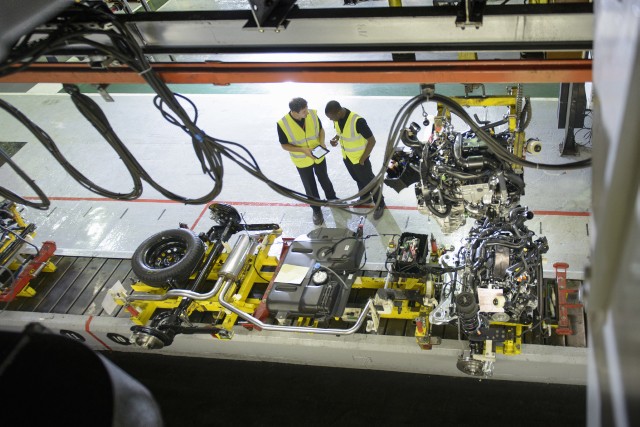Celebrating Manufacturing Day: A new era of digital opportunity

As we celebrate Manufacturing Day 2015, I reflect on how much change has happened in manufacturing as an industry in the last few decades.
Technology is driving major business transformation across all areas of the industry today. It’s changing the way manufacturers manage their operations, serve their customers, and provide services, support, maintenance. We are all part of a new revolution, the Industry Revolution 4.0, and the dawn of a new era. We are anticipating many industries to be completely transformed in this new era, not limited to manufacturing, but, by any measure, manufacturing is one of the industries to be impacted the most, through deep and fast transformation.
Manufacturing has been depending on technology and automation for decades. What we call the ‘systems of record’ era leveraged manufacturing resource planning (MRP) and enterprise resource planning (ERP) technologies, among others. These were important tools to help with planning and manufacturing and also with scheduling, logistics, and more. In that era, the data resided on-premise and was mostly structured data in nature. We also had some level of automation in the production plant, which gave us this notion of mass manufacturing—the ability to scale and offer similar or even the same products around the globe.
We look ahead and we anticipate moving from the one-size-fits-all era defined by mass manufacturing to a one-size-fits-one era enabled by industrial robots, 3D printing or additive manufacturing, connected supply chains, and more. In short, we are anticipating dramatic increases in the level of automation and technology being used. We are also expecting any new system in place to become utterly intelligent. We are all moving into the ‘systems of intelligence’ era.

This empowerment is driven by many innovations. I touched upon intelligent robots that are capable of learning and learning together, capable of working alongside with humans, capable of handling more sensitive tasks and much bigger loads, and the list goes on. Machine learning has a huge role to play here. 3D printing is another major disruptor. We all know that pretty much anything can be 3D-printed today, from body parts to food, from spare parts to complete systems that were too complicated to manufacture before. 3D printing is not for one-off print jobs only. It will find its place in “mass manufacturing.” Take the example of GE, who can 3D-print jet engine spare parts at destination airports before planes can even land. How do they know? Those jet engines are connected via IoT-enabled capabilities. GE is able to monitor those assets, literally, on-the-fly, and provide maintenance and part changes before incidents happen, minimizing aircraft down-time. GE was able to save 75% on that particular cost line item, printing 40,000 jet engine spare parts in one year. Yes, 40,000 parts.
The GE example highlights 3D printing and IoT as two major disruptors working together to transform the aerospace industry. The same capabilities will apply to many industries and use cases that it will change how companies operate forever.
In my previous blogs, I shared IoT-specific examples from Connected Cows to the Perfect Lettuce to Connected Elevators. Expect many more of those stories. I will invite those who are not familiar with them to read my earlier blogs. I guess the essence of all these disruptors, new technologies, and these stories is that in this new era, technology will drive business transformation in an unprecedented way in manufacturing as well as many other industries. We have not even touched upon augmented reality, natural user interfaces, and other significant disruptors.
So, we established that manufacturing will be a very different industry, starting in the very near future. Expect barriers to entry into the manufacturing industry to be lowered with increased levels of automation, expect sourcing strategies to change, and makers to play an important role going forward. Also, it may be realistic to expect that with increased automation, labor will shift in nature and decrease in quantity. If agreed, one may expect that manufacturing will go back to advanced economies as cheap labor will lose importance, but cyber-security, energy infrastructure, and political stability will become more critical. I intend to touch on these implications in my future blogs.
As we look forward to our next revolution in manufacturing, I join my colleagues in the U.S. in celebrating Manufacturing Day and inspiring our next generation of manufacturers.




